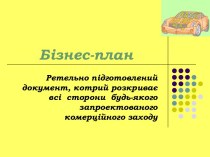- Главная
- Разное
- Бизнес и предпринимательство
- Образование
- Развлечения
- Государство
- Спорт
- Графика
- Культурология
- Еда и кулинария
- Лингвистика
- Религиоведение
- Черчение
- Физкультура
- ИЗО
- Психология
- Социология
- Английский язык
- Астрономия
- Алгебра
- Биология
- География
- Геометрия
- Детские презентации
- Информатика
- История
- Литература
- Маркетинг
- Математика
- Медицина
- Менеджмент
- Музыка
- МХК
- Немецкий язык
- ОБЖ
- Обществознание
- Окружающий мир
- Педагогика
- Русский язык
- Технология
- Физика
- Философия
- Химия
- Шаблоны, картинки для презентаций
- Экология
- Экономика
- Юриспруденция
Что такое findslide.org?
FindSlide.org - это сайт презентаций, докладов, шаблонов в формате PowerPoint.
Обратная связь
Email: Нажмите что бы посмотреть
Презентация на тему Strategy. The Four Grand Strategies
Содержание
- 2. Lecture’s topicsWhat are the basic types of
- 3. What is strategy?Strategy is the way in
- 4. The Four Grand StrategiesGrowth strategyStability strategyRetrenchment strategyCombination strategy
- 5. The Four Grand StrategiesA Growth strategy is
- 6. The Four Grand StrategiesA Stability strategy is
- 7. The Four Grand StrategiesA Retrenchment strategy is
- 8. The Four Grand StrategiesA Combination strategy is
- 9. Porter’s Competitive Strategies Cost-leadershipDifferentiationFocus
- 10. Porter’s Competitive Strategies Cost-leadership is a
- 11. Porter’s Competitive Strategies A differentiation strategy
- 12. Скачать презентацию
- 13. Похожие презентации
Lecture’s topicsWhat are the basic types of strategy that an organisation can follow?What are Porter’s competitive strategies?
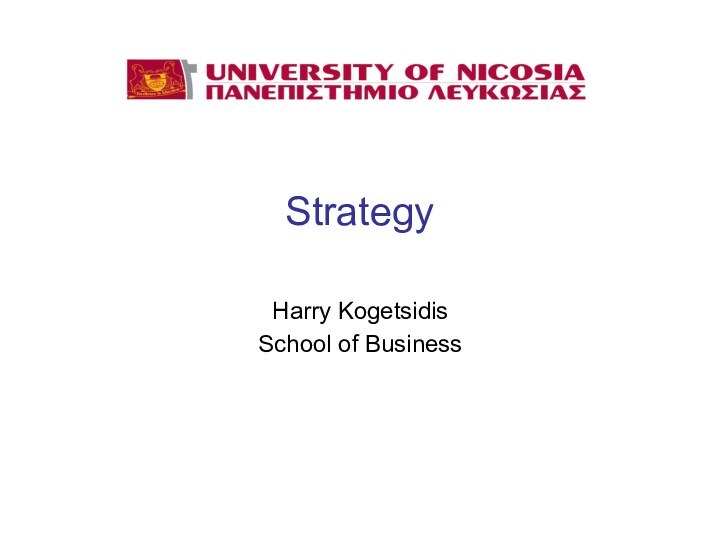
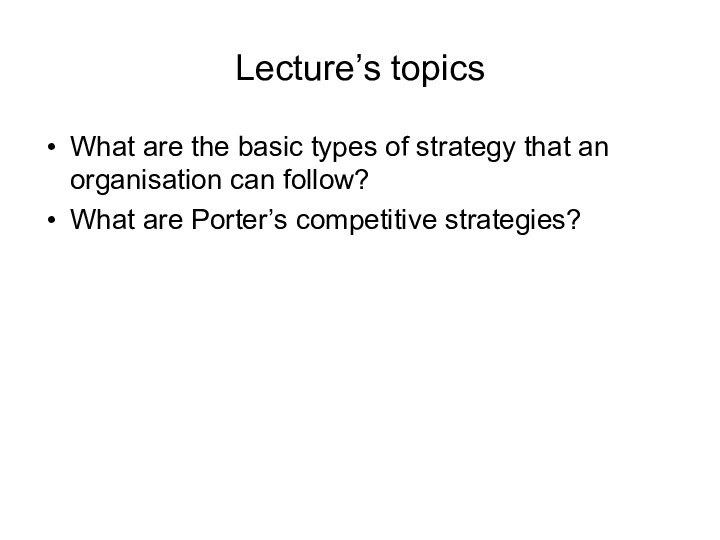
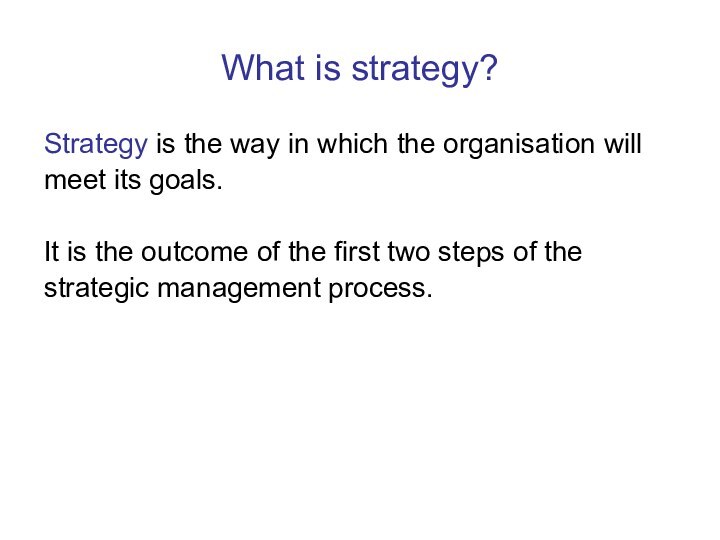
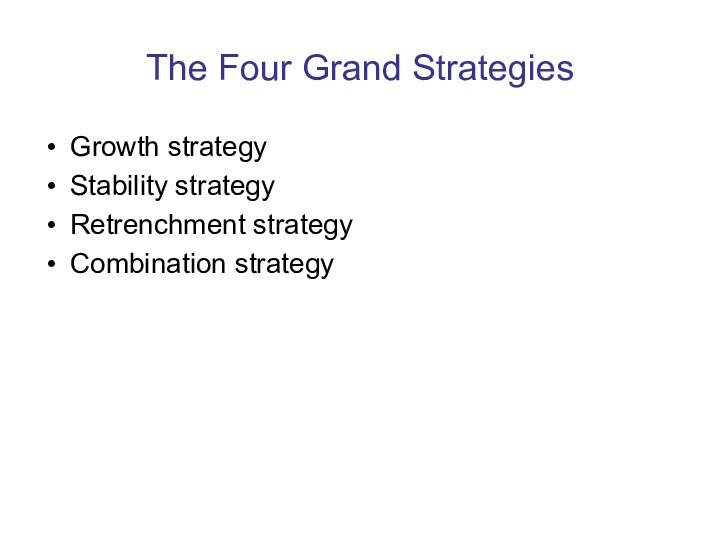

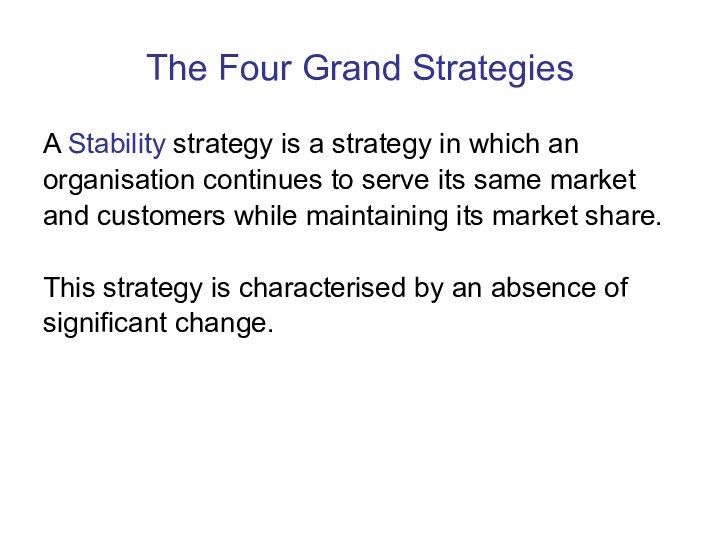
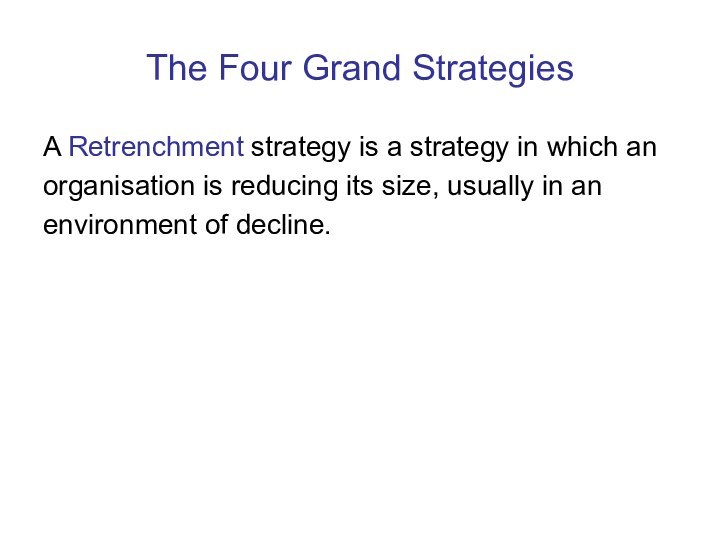
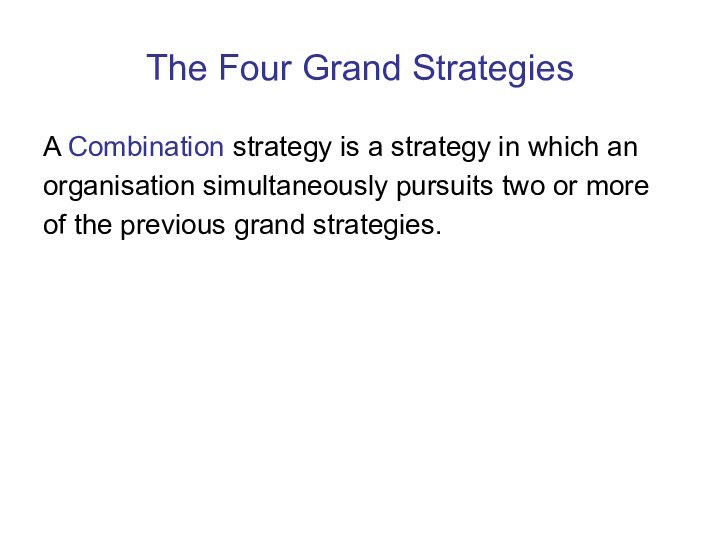
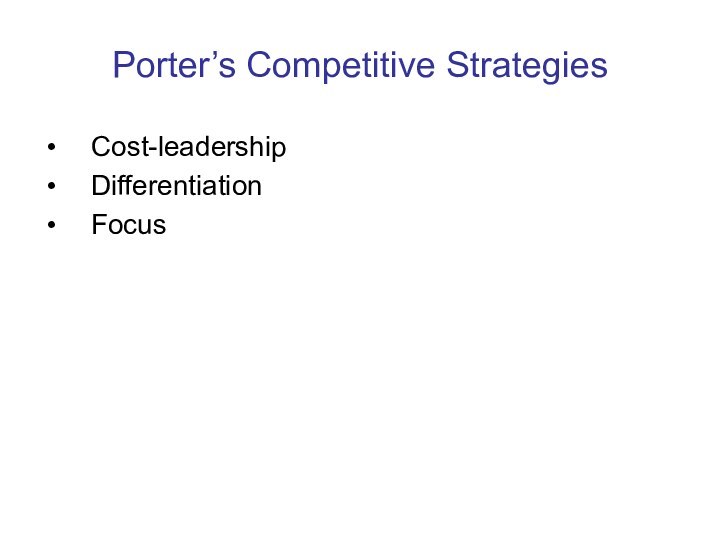
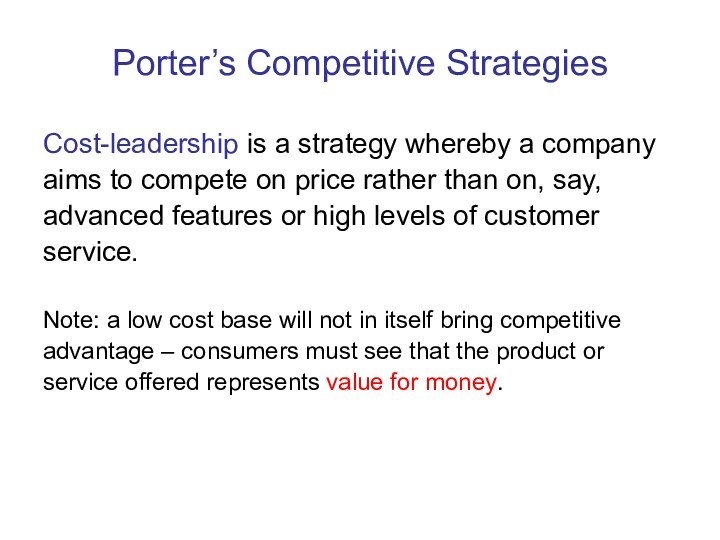
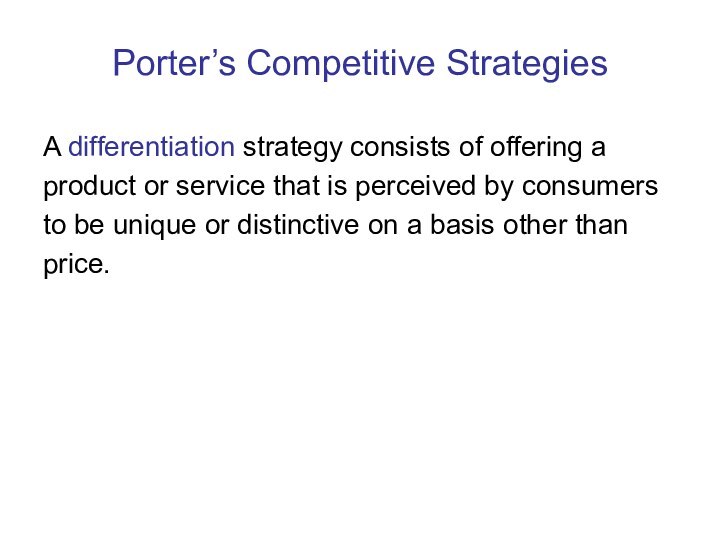
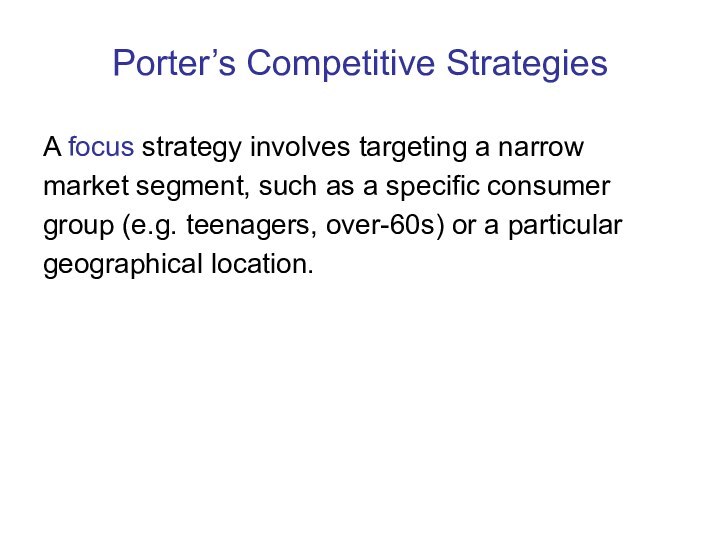
Слайд 3
What is strategy?
Strategy is the way in which
the organisation will
meet its goals.
It is the
outcome of the first two steps of the strategic management process.
Слайд 4
The Four Grand Strategies
Growth strategy
Stability strategy
Retrenchment strategy
Combination strategy
Слайд 5
The Four Grand Strategies
A Growth strategy is a
strategy in which an
organisation attempts to increase the
level of its operations.
This could be achieved through direct expansion,
new product development, or by diversifying –
merging with or acquiring other firms (a quick way
to build market share).
Слайд 6
The Four Grand Strategies
A Stability strategy is a
strategy in which an
organisation continues to serve its
same market and customers while maintaining its market share.
This strategy is characterised by an absence of
significant change.
Слайд 7
The Four Grand Strategies
A Retrenchment strategy is a
strategy in which an
organisation is reducing its size,
usually in an environment of decline.
Слайд 8
The Four Grand Strategies
A Combination strategy is a
strategy in which an
organisation simultaneously pursuits two or
more of the previous grand strategies.
Слайд 10
Porter’s Competitive Strategies
Cost-leadership is a strategy whereby a
company
aims to compete on price rather than on,
say, advanced features or high levels of customer
service.
Note: a low cost base will not in itself bring competitive
advantage – consumers must see that the product or
service offered represents value for money.
Слайд 11
Porter’s Competitive Strategies
A differentiation strategy consists of offering
a
product or service that is perceived by consumers
to be unique or distinctive on a basis other than
price.




























